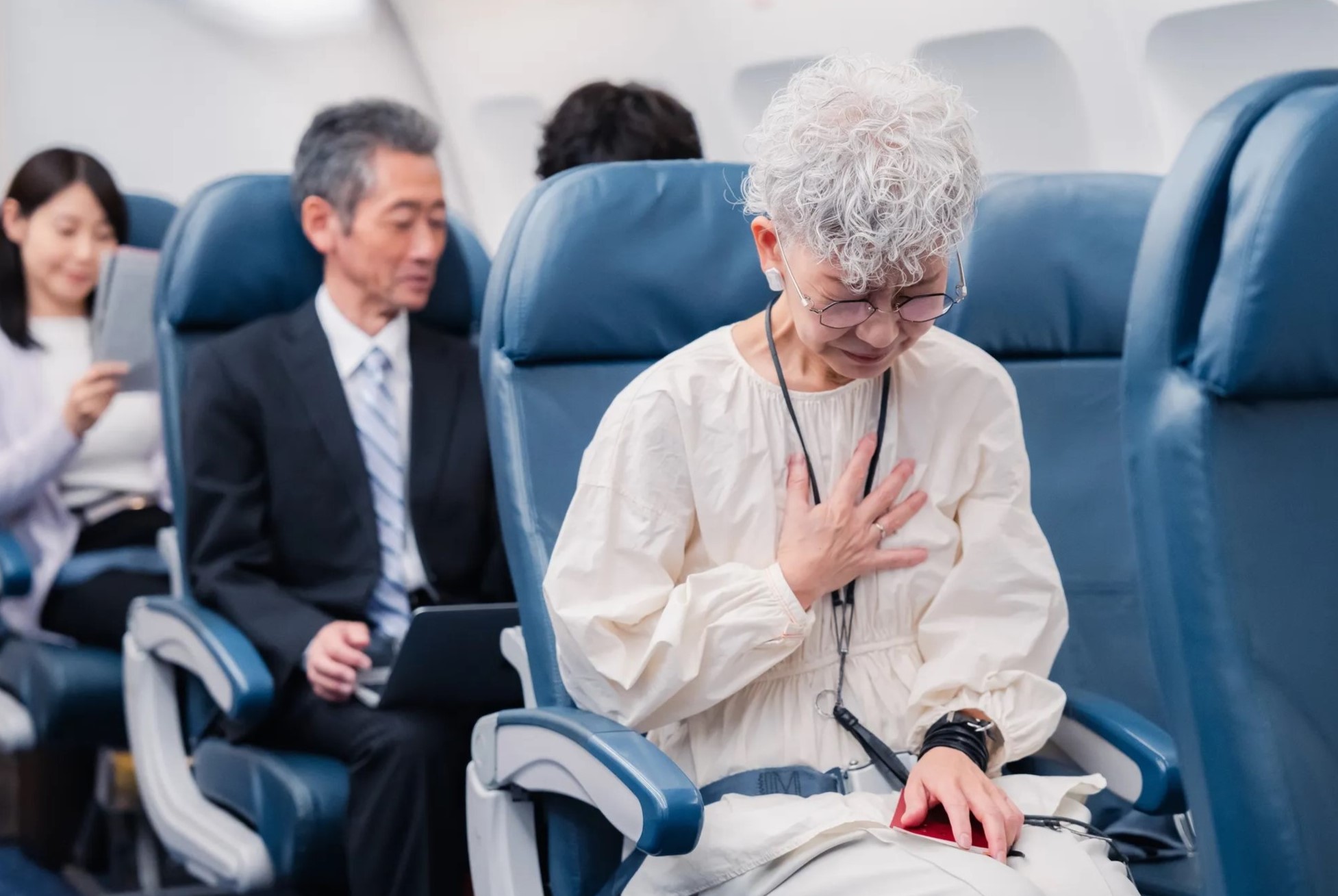
Ever wondered what happens when someone gets sick on a plane? In-flight medical emergencies are more common than you might think. With millions of people flying daily, it's no surprise that health issues arise mid-air. From fainting to heart attacks, flight crews are trained to handle a variety of situations. But what exactly goes on behind the scenes? How prepared are airlines for these unexpected events? Understanding in-flight medical emergencies can help you feel more at ease during your travels. Let's dive into 16 intriguing facts that shed light on what happens when health issues strike at 30,000 feet. Buckle up!
Key Takeaways:
- In-flight medical emergencies happen in about 1 in every 604 flights, with fainting, respiratory issues, and nausea being the most common. Flight crews are trained and equipped to handle these situations effectively.
- Passengers with medical training can play a crucial role in managing in-flight medical emergencies, and some airlines offer incentives to medical professionals who assist. Airlines are also exploring telemedicine options to improve in-flight medical care.
In-flight Medical Emergencies: What You Need to Know
Flying can be stressful, but what happens when a medical emergency strikes mid-air? Here are some surprising facts about in-flight medical emergencies that might change how you view your next flight.
Frequency of In-flight Medical Emergencies
How often do these emergencies actually happen? You might be surprised by the numbers.
-
In-flight medical emergencies occur in about 1 in every 604 flights. This means that while they are not extremely common, they are not rare either.
-
The most common in-flight medical issues are fainting, respiratory problems, and nausea. These account for nearly half of all in-flight medical incidents.
-
Cardiac events, while less common, are among the most serious in-flight emergencies. They require immediate and effective intervention to ensure passenger safety.
Preparedness of Flight Crews
Flight attendants are more than just friendly faces; they are trained to handle emergencies.
-
All flight attendants receive basic medical training, including CPR and the use of automated external defibrillators (AEDs). This training is crucial for handling emergencies effectively.
-
Airlines are required to carry medical kits on board. These kits include essential supplies like medications, syringes, and basic diagnostic tools.
-
Some airlines have access to ground-based medical support. This allows flight crews to consult with medical professionals on the ground for advice during an emergency.
Passenger Involvement in Medical Emergencies
Sometimes, passengers play a crucial role in managing in-flight medical situations.
-
Doctors and nurses on board often volunteer to help during medical emergencies. Their expertise can be invaluable in stabilizing a passenger's condition.
-
Airlines may offer incentives to medical professionals who assist during emergencies. These can include frequent flyer miles or other rewards.
-
Passengers are encouraged to inform the crew if they have medical training. This can help the crew know who to turn to in case of an emergency.
Medical Equipment on Planes
What kind of medical equipment is available on commercial flights?
-
Most commercial flights are equipped with AEDs. These devices can be life-saving in the event of a cardiac arrest.
-
Medical kits on planes include a variety of medications. These can range from pain relievers to medications for allergic reactions.
-
Oxygen tanks are available on all flights. They are used to assist passengers experiencing respiratory distress.
Legal and Ethical Considerations
Handling medical emergencies in the air involves unique legal and ethical challenges.
-
Good Samaritan laws protect passengers who assist in medical emergencies. These laws vary by country but generally offer some level of legal protection.
-
Flight crews must balance the needs of the sick passenger with the safety of the entire flight. This can sometimes involve difficult decisions, such as whether to divert the flight.
-
Airlines have protocols for handling deaths on board. While rare, these situations are managed with sensitivity and respect for the deceased and other passengers.
The Future of In-flight Medical Care
What advancements are being made to improve in-flight medical care?
- Some airlines are exploring telemedicine options. This technology allows real-time consultations with medical professionals on the ground, potentially improving outcomes for passengers experiencing medical issues.
In-flight medical emergencies are complex and challenging, but with trained crews, equipped planes, and sometimes the help of fellow passengers, many emergencies can be managed effectively.
Final Thoughts on In-flight Medical Emergencies
In-flight medical emergencies are more common than you might think. Knowing some basic facts can help you stay calm and prepared. Airlines have protocols in place, and flight attendants are trained to handle various situations. Passengers can assist too, especially if they have medical training. The most frequent issues are fainting, respiratory problems, and heart conditions. Having a travel health kit and knowing how to use it can be a lifesaver. Remember, staying hydrated and moving around during long flights can prevent many problems. If you have a medical condition, inform the airline ahead of time. This ensures they can accommodate your needs. Flying can be stressful, but being prepared makes a big difference. Next time you board a plane, you'll have peace of mind knowing what to do if an emergency arises. Safe travels!
Frequently Asked Questions
Was this page helpful?
Our commitment to delivering trustworthy and engaging content is at the heart of what we do. Each fact on our site is contributed by real users like you, bringing a wealth of diverse insights and information. To ensure the highest standards of accuracy and reliability, our dedicated editors meticulously review each submission. This process guarantees that the facts we share are not only fascinating but also credible. Trust in our commitment to quality and authenticity as you explore and learn with us.


